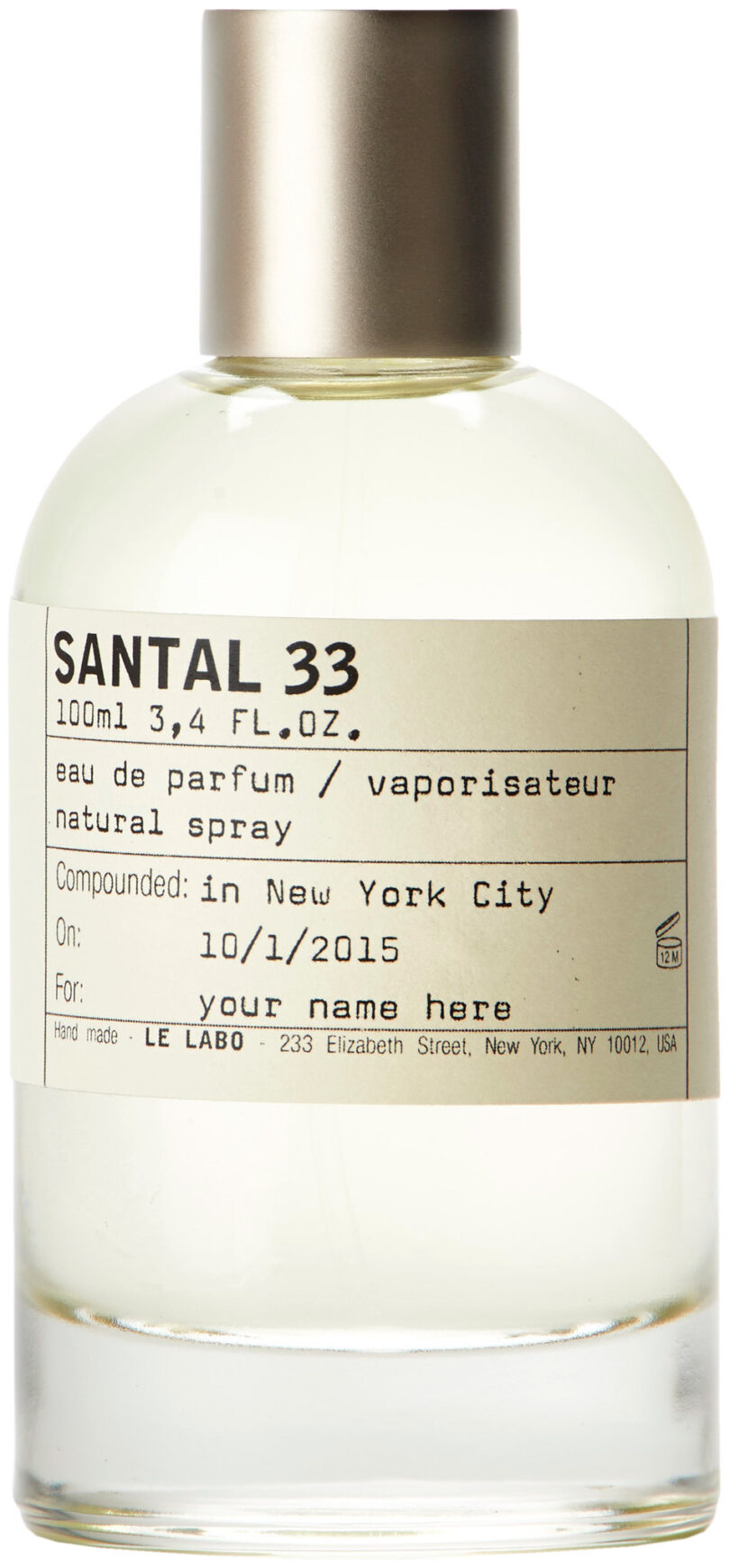Santal smells like earthy, woody, and creamy notes with a hint of sweetness and spice. Santal is known for its unique fragrance that combines earthy, woody, and creamy notes with a touch of sweetness and spice.
The scent is reminiscent of sandalwood, but with a distinct character all its own. It has a comforting and grounding quality, making it a popular choice in perfumes, candles, and skincare products. The warm and sensual aroma of santal is often described as being both exotic and familiar, making it a versatile and cherished scent in the world of fragrances.
Whether used as a base note or as the main component, santal adds a touch of sophistication to any fragrance blend.
Understanding The Aroma Of Santal
Understanding the aroma of Santal is essential for fragrance enthusiasts. Santal, also known as sandalwood, is widely cherished for its woody and exotic scent. This fragrance emits a warm, creamy, and earthy scent that can be described as sensual and calming. Santal is often used as a base note in perfumes due to its long-lasting properties.
The olfactory profile of santal typically consists of notes like cedarwood, vanilla, musk, and amber. These elements contribute to the rich and complex aroma of santal scents. The combination of these notes creates a unique and captivating fragrance that is favored by many.
When exploring santal scents, you may come across variations such as Santal Blanc or Santal Royal. Each variation adds its own twist to the fragrance, making it even more intriguing for perfume enthusiasts.
The Natural Essence Of Santal
Santal, also known as sandalwood, possesses a unique and captivating aroma that is highly sought after. The natural essence of santal is derived from the heartwood of the East Indian Sandalwood tree through a meticulous distillation process. The extraction of santal involves carefully collecting and grinding the heartwood into a fine powder, which is then subjected to steam distillation to obtain the valuable oil. This distillation process is crucial in preserving the aromatic compounds and therapeutic properties of santal. Several key factors contribute to the quality of santal oil, including the age of the tree, the geographical location, and the extraction method employed. The older the sandalwood tree, the higher the concentration and complexity of its aroma. Additionally, santal oil from specific regions such as Mysore, India, is renowned for its exceptional quality. Overall, the natural essence and extraction process of santal combine to create an enticing scent that is cherished in perfumery and aromatherapy.
Santal And Its Fragrance Families
What does Santal smell like? Santal is a versatile scent that can be found in various fragrance families, each with its own unique characteristics. Let’s analyze santal within three fragrance families:
Floral woody fragrance: Santal adds depth and warmth to floral compositions, creating a harmonious blend of delicate florals and woody notes. It enhances the elegance and femininity of the fragrance, making it a popular choice for romantic and sophisticated scents.
Oriental woody fragrance: In oriental fragrances, santal brings a sensual and exotic touch to the composition. It blends well with spices, resins, and sweet notes, creating a rich and seductive aroma. This combination is often associated with luxury and opulence.
Spicy woody fragrance: Santal plays a key role in spicy fragrances, adding warmth and complexity. It pairs beautifully with spices like cinnamon, clove, and nutmeg, creating a captivating and aromatic blend. These scents are often bold and adventurous, perfect for those seeking a unique and distinctive fragrance.
Santal’s versatility allows it to be incorporated into various fragrance families, making it a popular and sought-after ingredient in perfumery.
The Key Notes In Santal Fragrances
What does Santal smell like? The key notes in Santal fragrances include sandalwood as the dominant note, complemented by cedar, rose, and vetiver.
Sandalwood, the star of Santal fragrances, is known for its rich, woody aroma that is warm and creamy. It adds depth and character to the scent, creating a sense of sophistication and elegance.
Cedar is often used as a supporting note in Santal fragrances. Its earthy, resinous scent blends harmoniously with sandalwood, enhancing the overall fragrance profile and adding a touch of freshness.
Rose is another common note found in Santal fragrances. Its floral sweetness delicately complements the woody notes, creating a beautiful balance between femininity and masculinity in the scent.
Vetiver, with its smoky and earthy aroma, adds a unique twist to Santal fragrances. It brings a touch of mystery and depth to the scent, making it more intriguing and captivating.
Popular Santal Fragrances
When it comes to santal fragrances, there are several iconic scents in the market that leave a lasting impression. One such fragrance is Santal 33 by Le Labo. With its warm and woody notes of cardamom, violet, sandalwood, and cedar, this fragrance has become a cult favorite among fragrance enthusiasts.
Another popular santal scent is Tam Dao by Diptyque. This fragrance captures the essence of sandalwood with its blend of cedar, rosewood, and sandalwood. It has a creamy and velvety texture that envelops the senses.
Santal Blush by Tom Ford is also a well-loved santal fragrance. It features a combination of exotic spices, sandalwood, and musk, creating a luxurious and sensual scent.
These iconic santal fragrances offer a unique olfactory experience, allowing you to indulge in the rich and captivating aroma of sandalwood.
Santal In Traditional And Spiritual Practices
Santal holds great historical significance in traditional cultures, where it has been used for centuries. Its rich and enchanting fragrance has made it a popular choice for sacred purposes in various spiritual practices. The aroma of santal is believed to have calming and grounding effects, helping individuals to find inner peace and tranquility. Its deep woody and creamy scent brings about a sense of serenity and balance. Many cultures have incorporated santal into their rituals and ceremonies, considering it as a sacred and purifying ingredient. With its unique properties, santal has become an integral part of spiritual and traditional practices, enhancing the overall experience and creating an atmosphere of harmony.
Historical significance of santal in traditional cultures
- Used for centuries in traditional cultures
- Considered as a sacred and purifying ingredient
- Enhances the overall experience of rituals and ceremonies
Sacred uses in various spiritual practices
- Brings about a sense of serenity and balance
- Helps individuals find inner peace and tranquility
- Creates an atmosphere of harmony during spiritual practices
The calming and grounding effects of santal fragrance
- Santal’s aroma has a calming and grounding effect
- Provides a sense of peace and relaxation
- Creates a connection to nature and earth
Pairing Santal With Other Fragrances
Santal is a fragrance that has a unique and captivating scent. Pairing santal with other fragrances can create a more complex and layered aroma that is truly remarkable. One complementary scent that works well with santal is citrus notes. The zesty and refreshing quality of citrus blends harmoniously with the warm and woody scent of santal. Another suitable scent to pair with santal is patchouli. The earthy and musky aroma of patchouli adds depth and intensity to the fragrance, enhancing its overall complexity. Additionally, vanilla is also a great choice to combine with santal. The sweet and creamy scent of vanilla adds a touch of warmth and sweetness to the fragrance, creating a more balanced and inviting aroma.
Caring For Santal Fragrances
When it comes to caring for santal fragrances, proper storage is essential to maintain their scent quality and longevity. To ensure your santal perfumes last, follow these tips:
- Keep your santal perfumes away from direct sunlight, as exposure to UV rays can alter the fragrance composition. Store them in a cool, dark place, like a drawer or cabinet.
- Avoid extreme temperature changes, as they can also affect the scent. Keep your santal fragrances in a stable environment to preserve their quality.
- Seal the bottles tightly after each use to prevent air exposure. This helps to maintain the fragrance’s freshness and prevents oxidation.
- When applying santal perfumes, ensure your skin is clean and moisturized. Apply them to pulse points, such as the wrists, neck, and behind the ears, for optimal scent projection.
- If you prefer a subtler scent, spray the fragrance into the air and walk through the mist. This method distributes the scent evenly and prevents overpowering.
- To preserve santal fragrance notes, avoid excessive rubbing of the applied area. This can disrupt the fragrance molecules and alter the intended scent.
Discovering Your Perfect Santal Scent
Choosing the perfect santal fragrance requires consideration of various factors. Personal preferences play a significant role in determining the scent that appeals to you. Some individuals may prefer a strong, woody santal aroma, while others may lean towards a more subtle and earthy fragrance.
The occasion and season also come into play when selecting a santal scent. For formal events, you may opt for a more sophisticated and refined fragrance, whereas a lighter and fresher scent may be ideal for everyday wear during warmer seasons.
Another crucial factor is your skin chemistry. The way a fragrance reacts with your skin can differ from person to person, so it’s important to test a scent on your skin before making a decision.
When exploring different formulations of santal fragrances, you’ll come across options such as eau de parfum, which typically offers a more intense and longer-lasting scent, and eau de toilette, which is lighter and more suitable for daytime wear. Additionally, solid perfumes are a great choice for those who prefer a travel-friendly and mess-free option.
The Allure Of Santal
The allure of santal fragrance lies in its timeless appeal. Santal is a symbol of luxury and sophistication, captivating the senses with its enchanting aroma. This aromatic wood has been used in perfumery for centuries and is renowned for its warm, woody, and creamy notes. The scent of santal is known to have a grounding and calming effect, evoking a sense of tranquility and inner peace. Whether used in perfumes, candles, or skincare products, santal brings a distinctive and exotic element to any fragrance composition. Its versatile nature allows it to blend harmoniously with other notes, adding depth and complexity to perfumes. Embrace the allure of santal and experience the captivating aroma that has stood the test of time.

Credit: stylecaster.com
Frequently Asked Questions
What Is The Santal Smell?
The Santal smell is a unique scent known for its woodsy and earthy notes.
Does Santal Smell Good?
Santal has a pleasant scent that is enjoyed by many people due to its fragrance.
How Would You Describe Santal?
Santal is a fragrant, woody scent with hints of spice and sweetness. It embodies warmth and tranquility.
Does Santal Smell Like Pickles?
No, Santal does not smell like pickles. Santal has its unique and distinct fragrance.
Conclusion
To sum it up, Santal is a captivating scent that offers a unique olfactory experience. Its warm, woody, and creamy notes create a sense of comfort and tranquility. Santal is known for its versatility, making it a popular choice in various fragrance compositions.
Whether used as a standalone fragrance or blended with other notes, Santal adds depth and sophistication to any perfume. Its earthy and smoky nuances evoke images of serene forests and cozy firesides. The exotic and alluring nature of Santal makes it an ideal choice for both men and women.
So, if you’re looking for a fragrance that exudes elegance and has a touch of mystery, Santal is the perfect choice. Its rich and enchanting aroma is sure to leave a lasting impression. Discover the enchantment of Santal and let it transport you to a world of pure sensory delight.







